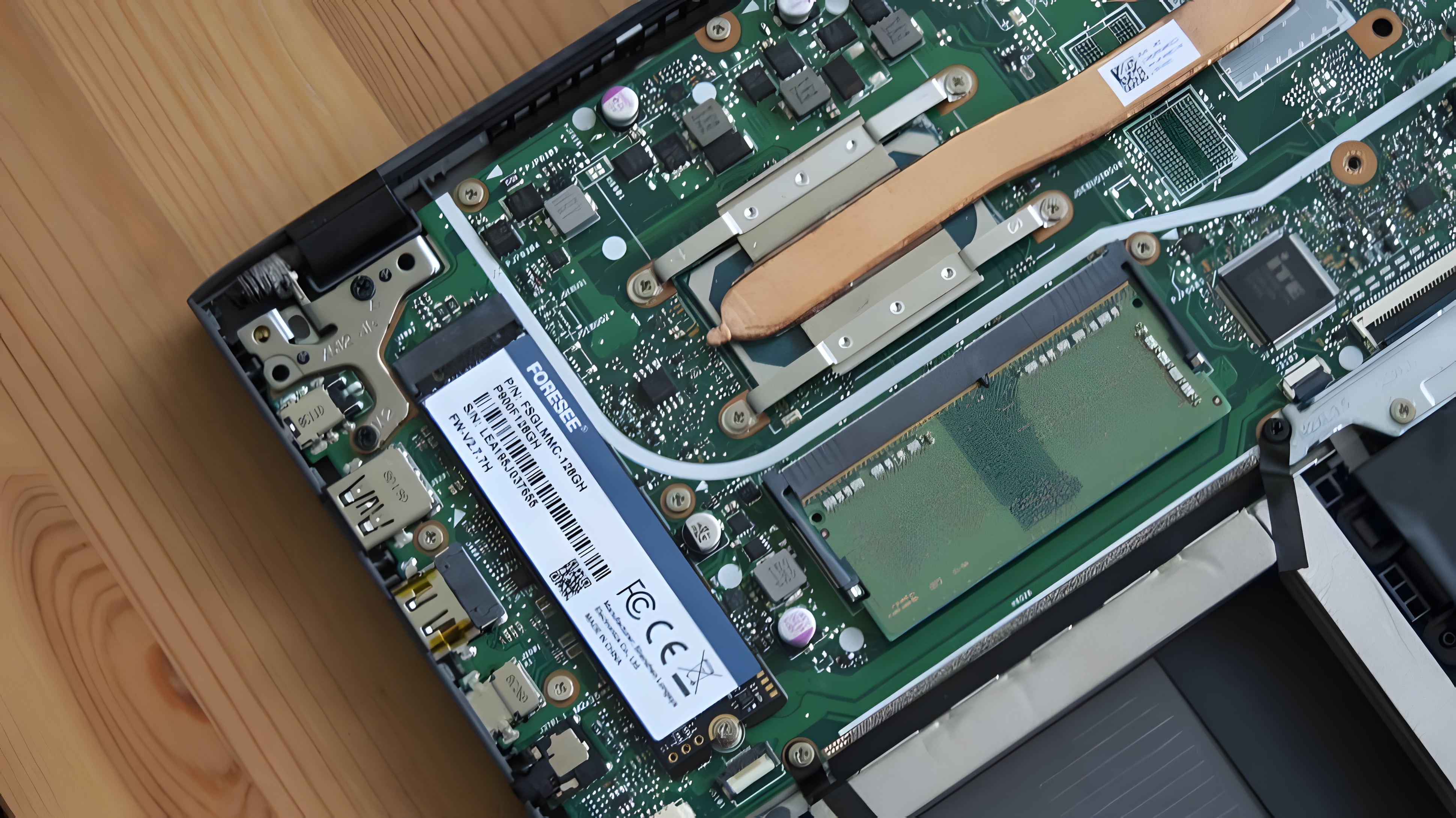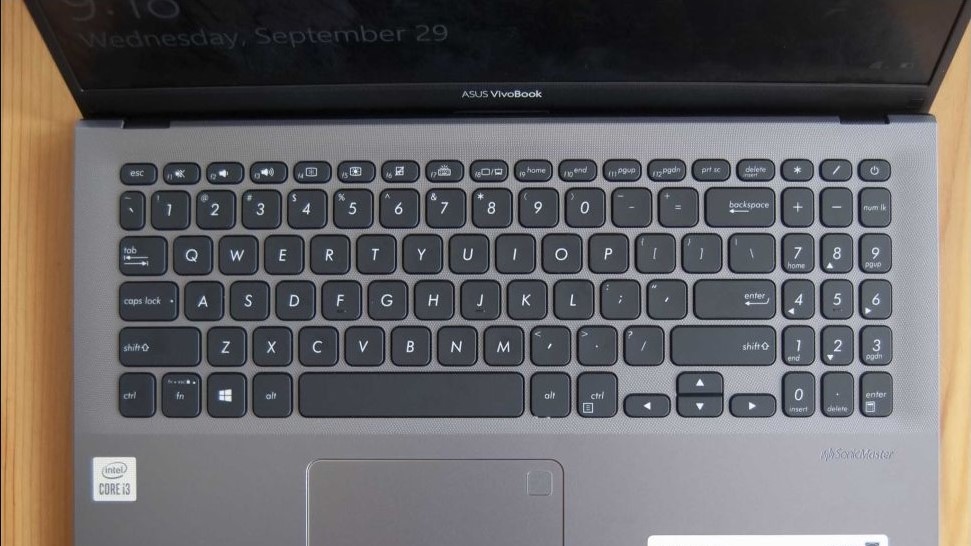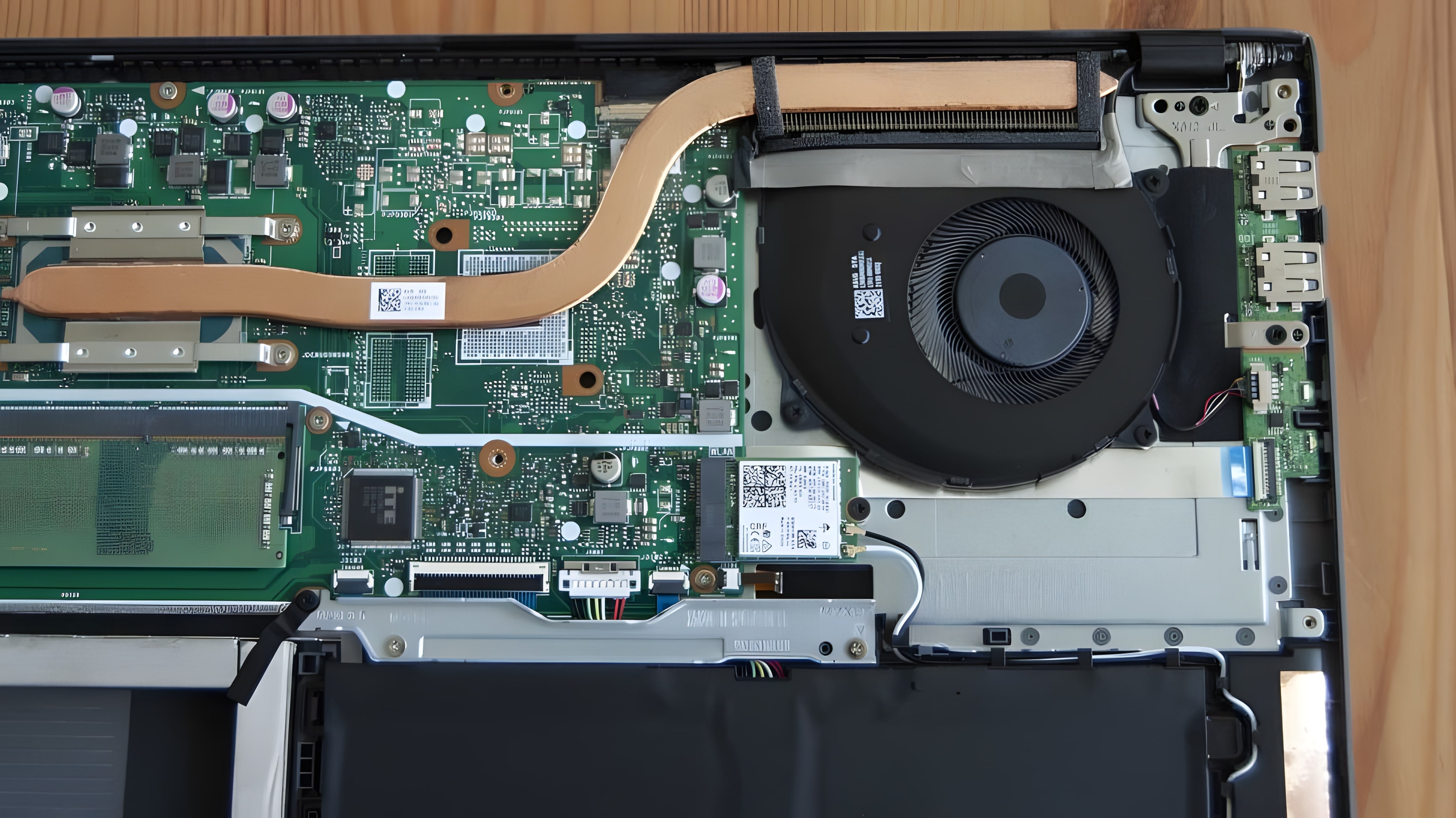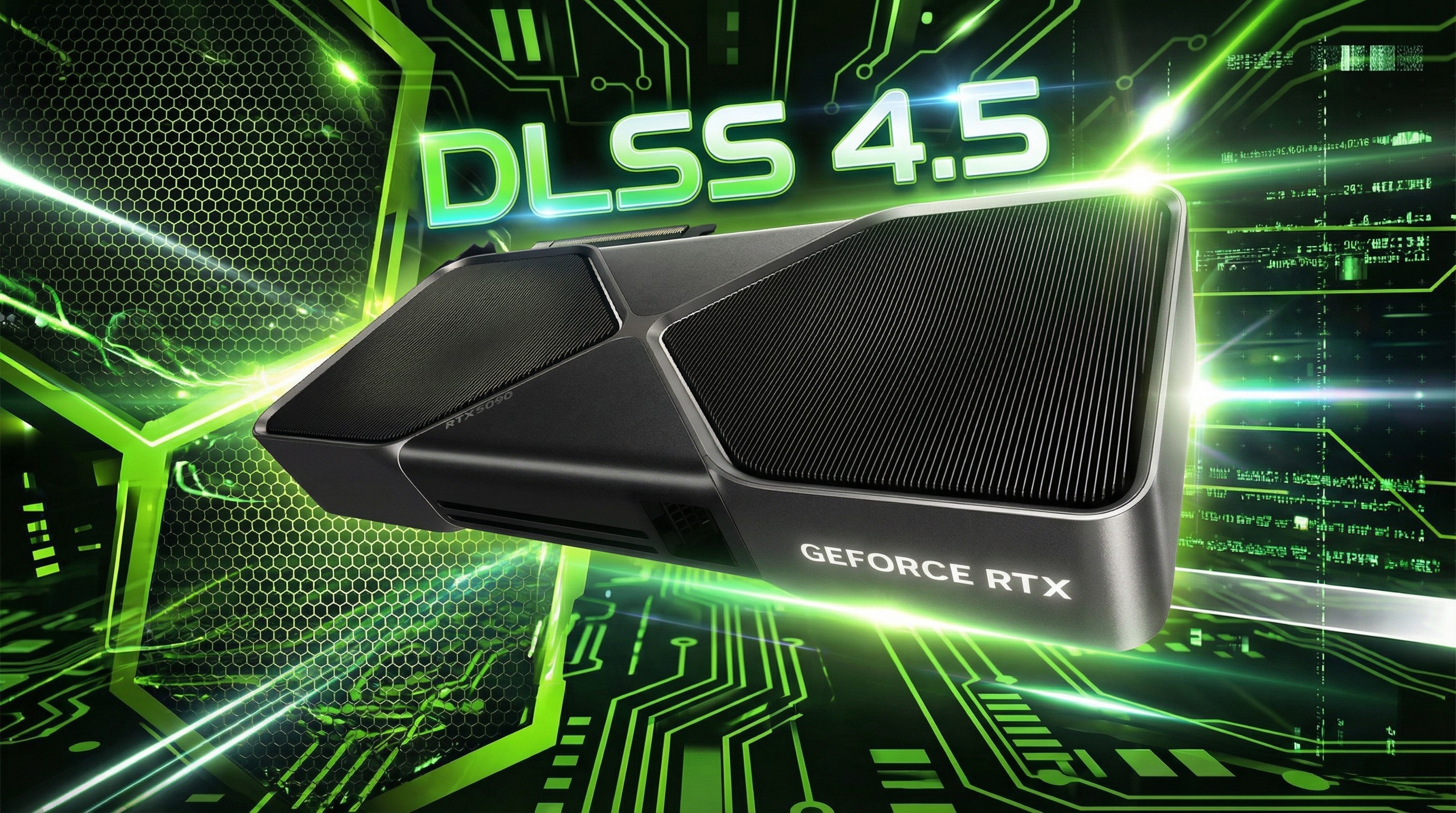ASUS VivoBook 15 review: One of the best sub-$500 laptops available today
The ASUS VivoBook 15's strong set of features makes it easier to ignore its shortcomings.

Finding a good laptop on a budget can be tricky. Many cheap laptops look tempting, but they may not deliver on their promised features and performance. And with the increased demand for home-based learning and working, laptop brands have been quick to respond with increasingly better value for money. ASUS is one of the brands that I associate with affordable laptops, especially its VivoBook series which are incredibly affordable and actually pack a lot of features in for the price. I’ve been testing the VivoBook 15 for a few weeks to see how it stands out from the competition, and whether it's worth buying.
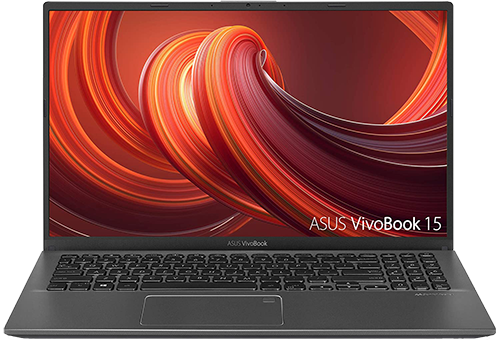
Bottom line: With generous port selection, fingerprint reader, decent camera, comfy keyboard, and expected performance, the VivoBook 15 makes a strong case for itself in the sub-$500 market. Battery life is a letdown, and the screen isn't overly colorful, but these are easy to look past when compared to the drawbacks of many other budget laptops on the market.
Pros
- Lots of ports
- Lightweight build
- Fingerprint reader
- Backlit keyboard with number pad
- Decent performance from Core i3
Cons
- Display isn't overly colorful
- Battery life doesn't impress
- Short AC adapter cable
- Speakers on the quiet side
- Slow SSD
ASUS VivoBook 15: Price, availability, and specs
The ASUS VivoBook 15 (model number F512JA-AS34) I have in for review includes a 10th Gen Intel Core i3-1005G1 processor (CPU), 8GB of RAM, and a 128GB solid-state drive (SSD). This exact model with 15.6-inch FHD display generally costs between $450 and $500, putting it firmly in the range of our best budget laptop collection. It's available at many major online retailers, including Amazon, Walmart, and Newegg.
Following are the exact specs found in my review unit.
| Category | Spec |
|---|---|
| OS | Windows 10 Home in S mode (Windows 11-ready) |
| Processor | 10th Gen Intel Core i3-1005G1 2 cores, 4 threads Up to 3.4GHz |
| RAM | 8GB DDR4 |
| Graphics | Intel UHD |
| Storage | 128GB M.2 SATA SSD |
| Display | 15.6 inches 1920x1080 (FHD) Non-touch 88% screen-to-body ratio Matte |
| Ports | USB-C 3.1 Two USB-A 2.0 USB-A 3.1 HDMI 3.5mm audio microSD card reader |
| Connectivity | Wi-Fi 5 Bluetooth 4.1 |
| Camera | Front-facing 720p |
| Keyboard | Backlit Number pad |
| Touchpad | Precision |
| Security | Fingerprint reader |
| Battery | 32Wh |
| Dimensions | 14.06 x 9.06 x 0.78 inches (357mm x 230mm x 20mm) |
| Weight | 3.5 pounds (1.6kg) |
| Color | Slate Grey |
ASUS VivoBook 15: What I like
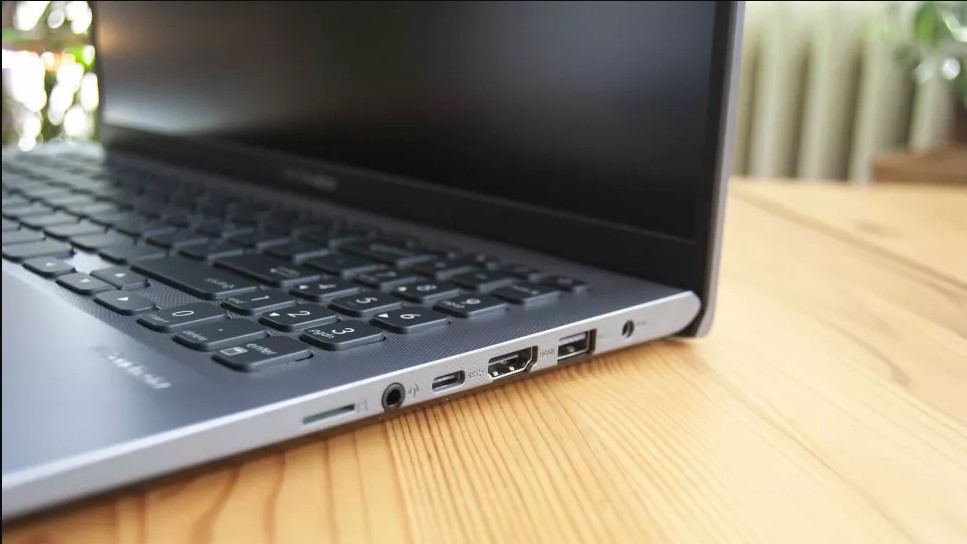

The VivoBook 15’s plastic body is surprisingly light for a 15-inch laptop, weighing around 3.5 pounds (1.6kg). It may not be the slimmest laptop around, but it’s hard to complain at this price range. The lid and the base are both sturdy, and they don’t feel as cheap or hollow as some other budget laptops. The design is simple and elegant, and the Slate Grey color helps to hide any smudges.
ASUS was generous with ports, offering up USB-C 3.1, two USB-A 2.0, USB-A 3.1, HDMI, 3.5mm audio, and a microSD card reader. Installing benchmarking software from a microSD card posed no problems, and the HDMI port is great for connecting to a TV or external PC monitor. Unfortunately, the USB-C port doesn't support power delivery so you must use the barrel charging port.
The laptop has a modern look thanks to the thin bezel around the display, including the bottom. I used a SpyderX Pro colorimeter to measure the color accuracy, and it showed 67% sRGB, 50% AdobeRGB, and 50% DCI-P3 coverage. These are not great results for a high-end laptop used for creative work, but they are acceptable for a budget laptop. The display has an FHD resolution and a matte finish, and it can reach up to about 250 nits of brightness. The screen is good enough for schoolwork and general productivity.
The VivoBook 15's keyboard, touchpad, and camera are way above what I expected from a $460 laptop.
The keyboard here is surprisingly good. I still dislike the smaller chiclet shape, but the ample 1.4mm key travel, three-stage backlight, and number pad more than make up for it. If you're buying a budget laptop to be used for essays and drafts, this one should be quite easy to get used to. Individual navigation keys are appreciated. The touchpad is fairly small, but the click is balanced and is without dead spots. It might not feel as solid as the touchpads on the best Ultrabooks, but it doesn't rattle.
I’m not a fan of having the fingerprint reader integrated with the touchpad, but it’s good that it’s near the corner edges. It works perfectly in practice, allowing me to log in quickly and securely with Windows Hello. This is a handy feature for working in an office or other public place.
The front-facing 720p camera is surprisingly good, and no one seemed to notice the switch during video meetings. It's certainly on par with (if not better than) the camera in my Dell XPS 13. The only drawback is a lack of privacy shutter.
The 10th Gen Core i3-1005G1 does a decent job feeling crisp when focused on one task at a time. Its dual cores do suffer if you begin throwing multiple requests their way, so you'll want to reserve this laptop for lighter duties. And don't buy it expecting a gaming laptop; Intel UHD graphics don't have the power required for anything other than very light titles. Our collection of the best gaming laptops has more information on that front. The sizable fan and copper heat pipe easily keep the Core i3 cool, and fan noise is never really an issue.
Have a look at how the VivoBook 15 compares to a bunch of other laptops we've recently tested.
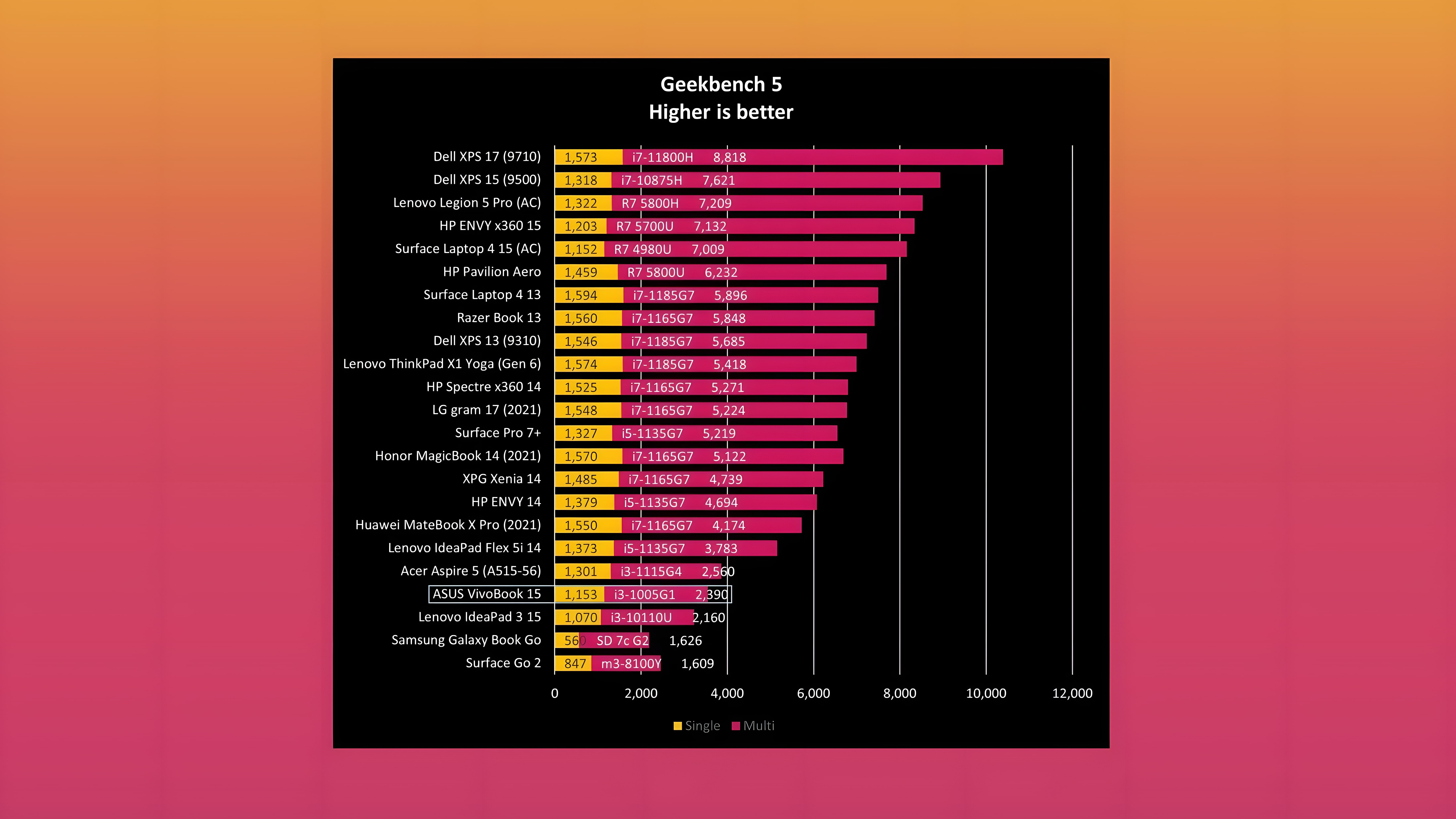
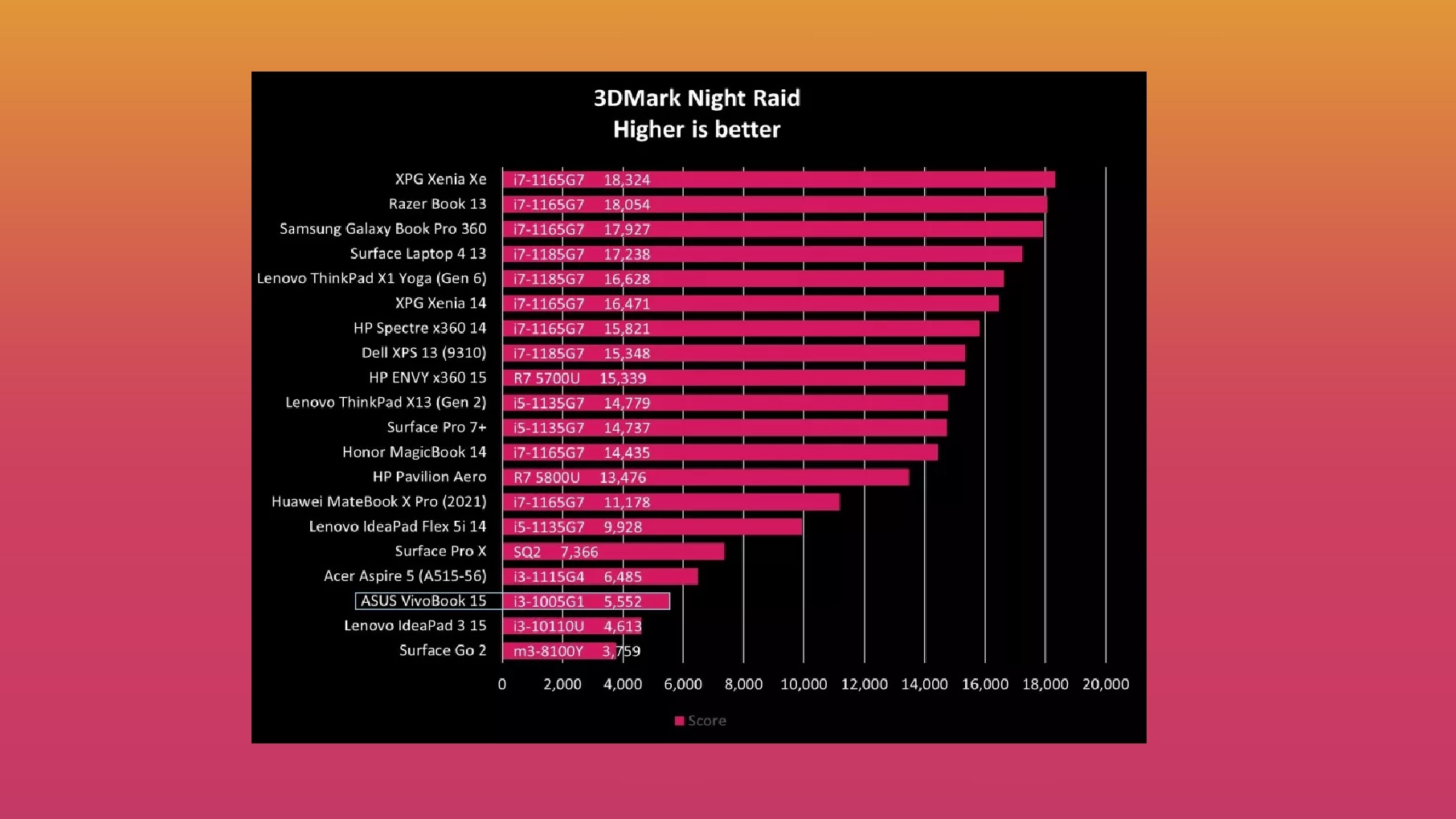
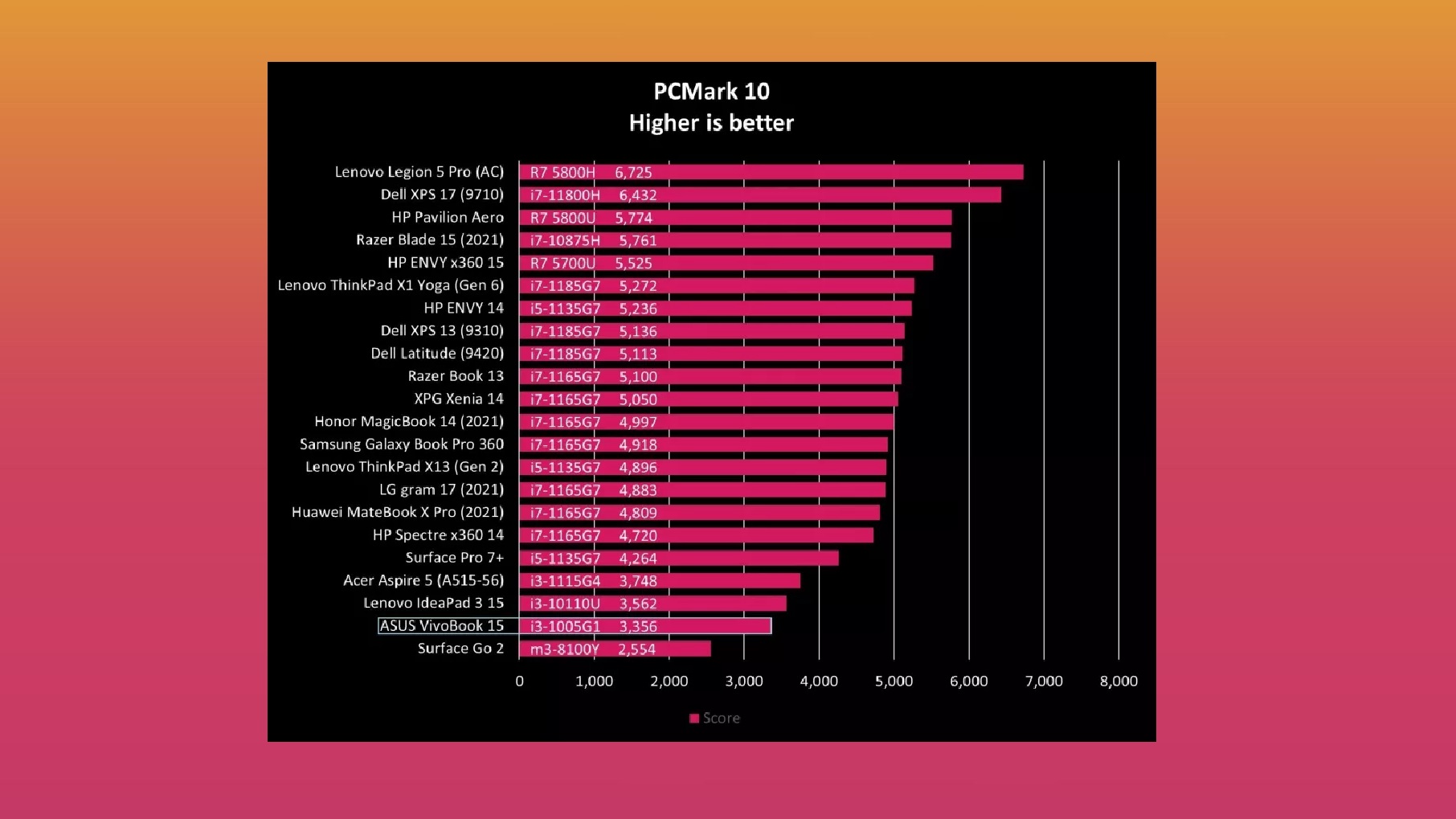
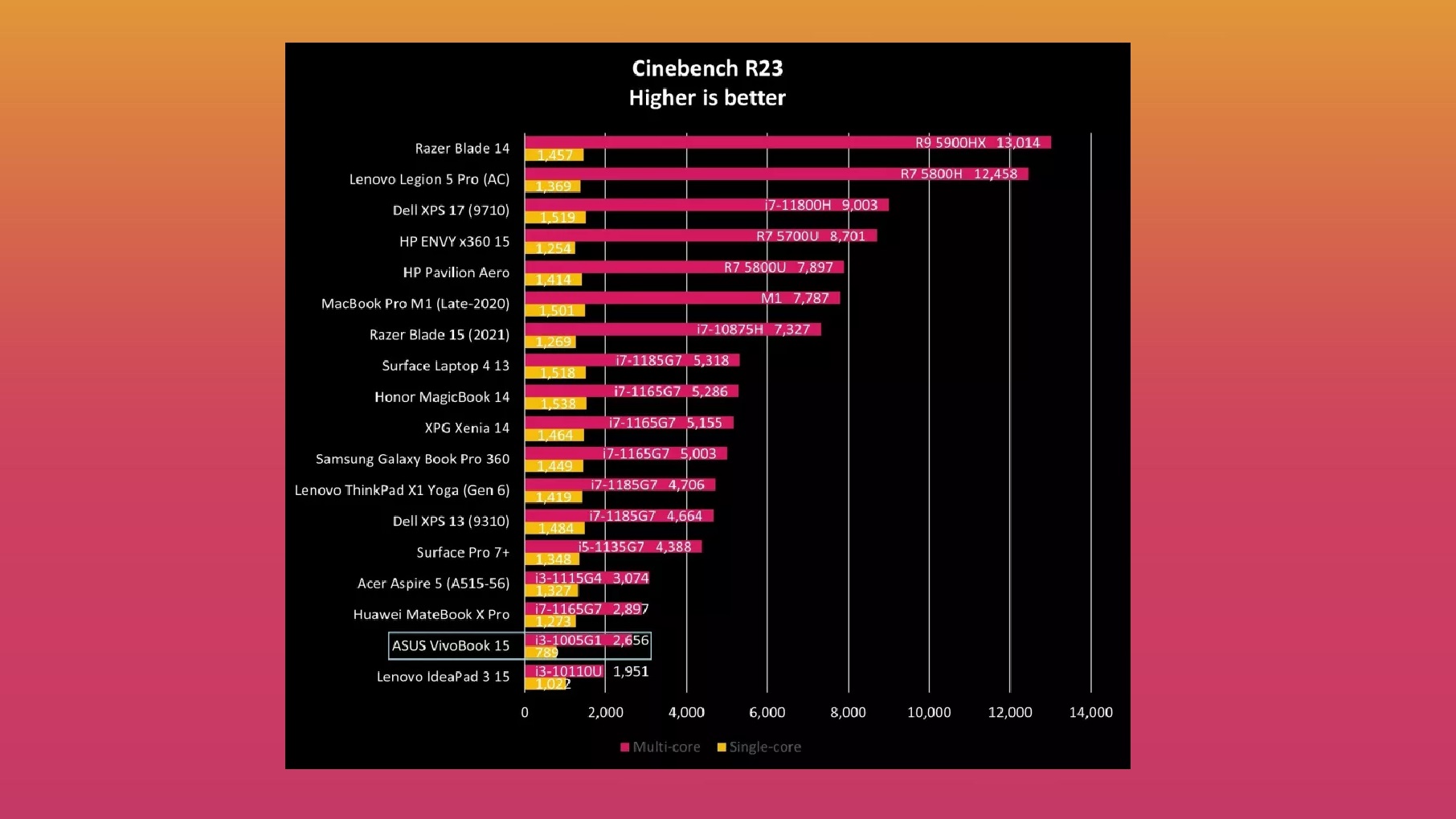
Pulling off the back cover reveals an accessible SODIMM RAM slot for DIY upgrades. 4GB of RAM comes soldered, with another 4GB module installed from the factory. The VivoBook 15 isn't loaded down with bloatware like some budget PCs. There's an ASUS app that handles system diagnostics and support, and a McAfee antivirus app that can be promptly removed.
ASUS VivoBook 15: What I don't like
The VivoBook 15 has some flaws due to its very low price, but none of them are deal-breakers. One issue is battery life, which only lasted five hours and 37 minutes in PCMark 10’s Modern Office test. That’s short for a Core i3 system with FHD screen, and using the laptop regularly reduces that number to about four and a half hours. You’ll have to bring the small AC adapter with you unless it’s a quick trip. On that note, the short length of the AC cable is an annoyance.

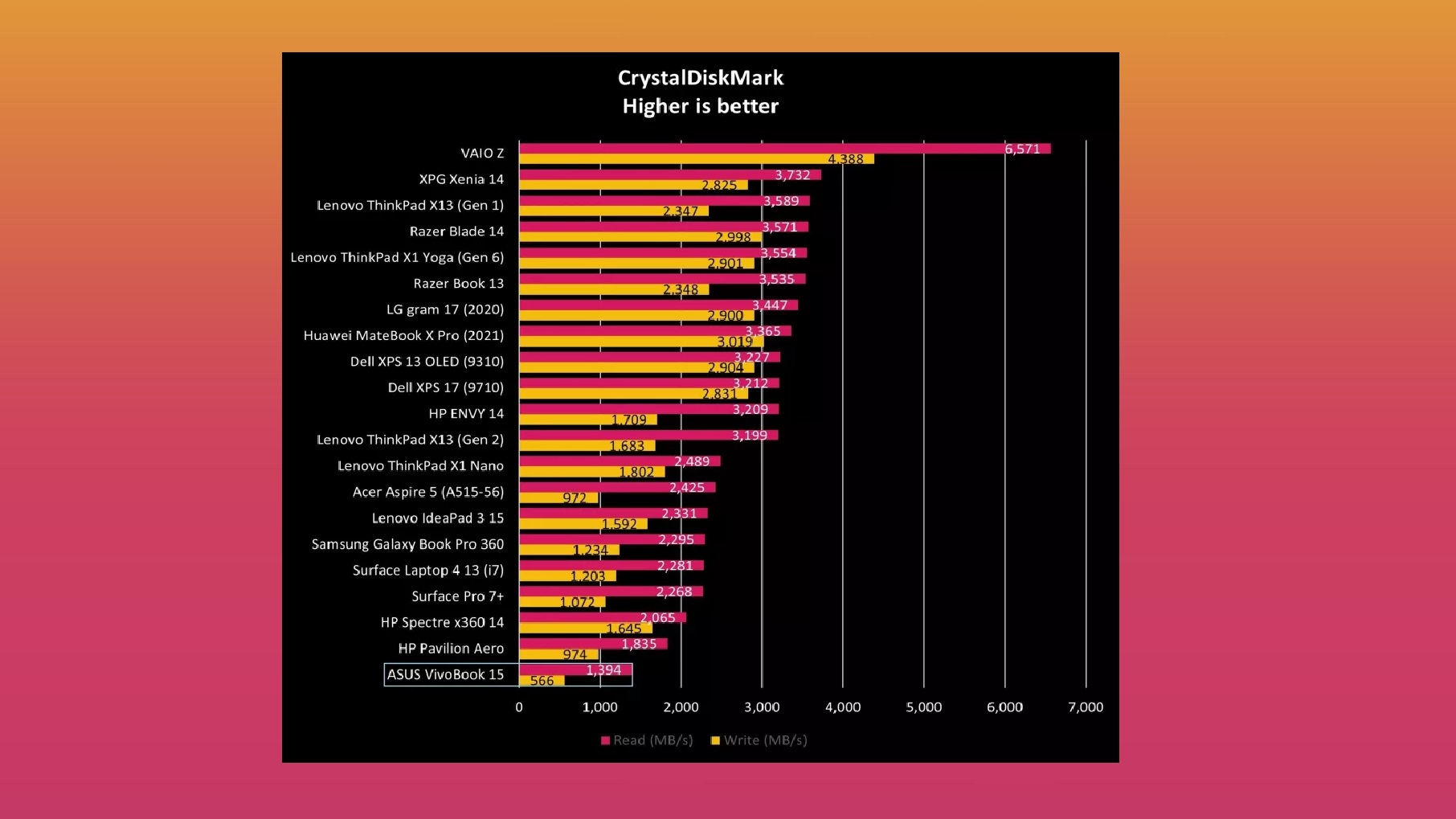
The laptop's audio is not the loudest, but at least sound is clear without any buzzing. You're not going to be able to entertain a room full of people with music, but you will be able to hear video chats without issue. Finally, the included M.2 SATA SSD is rather slow. You can upgrade it yourself after purchase with one of the best M.2 PCIe SSDs for much better performance. There's also space for a 2.5-inch SATA SSD or HDD, though there doesn't appear to be any hookup; this likely has to be configured from the factory.
ASUS VivoBook 15: Competition
I recently reviewed the Lenovo IdeaPad 3 15, a $400 laptop aimed at the same market as the VivoBook 15. Its keyboard is great but lacks a backlight, there's a camera shutter, RAM and SSD are upgradeable, it has better audio, and battery life is considerably better.
However, there are a few reasons why the IdeaPad doesn't make the list of the best budget laptops. Its touchpad is small and loose, the HD display (which can be upgraded to FHD for extra money) is dreadful, there's no USB-C port, and there's quite a bit of flex to the plastic chassis. Performance between the IdeaPad 3 15 and the VivoBook 15 is about the same, but the ASUS laptop's extra features push it ahead of the Lenovo device.
There's also the Acer Aspire 5 in the same price range. It has an 11th Gen Intel Core i3 CPU for better performance, and it offers considerably better battery life. However, the entire experience is marred by an awful FHD display. Between the Acer and the ASUS, I'd go for the better display over slightly better performance and better battery life.
If you're in search of a more premium 2-in-1 build with less performance but better display, the Surface Go 2 or Surface Go 3 might be what you're looking for. Have a look at our picks for best Windows laptops for more options.
ASUS VivoBook 15: Should you buy it?
You should buy this if ...
Why you can trust Windows Central
- You want to pay less than $500 for a laptop
- You want a comfortable keyboard and touchpad
- You want a 15-inch display with FHD resolution
You shouldn't buy this if ...
- You want to game or get into specialized work on your laptop
- You want all-day (8+ hours) battery life
- You want a 15-inch laptop that's as thin and light as possible
You can't expect a laptop that costs around $470 to be perfect. That's not why the VivoBook 15 exists. Buying laptops that cost less than $500 really comes down to weighing pros and cons and finding the right device for your needs. In that frame, the VivoBook 15 is fairly well rounded in terms of features and performance; however, it's not without flaws.
The screen is thankfully 1920x1080 for a far clearer picture than HD, though it does lack some color and maxes out at 250 nits brightness. The screen is perfectly usable when paired with the Core i3 CPU, and I had no issues with word processing, email, heavy web browsing, and streaming. Things like photo editing — which requires a strong CPU and precise color reproduction — aren't really recommended on this system, but that's expected.
Battery life is likely the biggest drawback here, lasting between four and six hours depending on the task at hand. That's not a great number, but if you're using the laptop around the house it shouldn't be as much of an issue. The slow SATA SSD is also a letdown, but at least that's easily replaced after purchase.
The VivoBook 15 makes up for its shortcomings with a comfortably backlit keyboard, sturdy Precision touchpad with embedded fingerprint reader, and great port selection that includes a microSD card reader and USB-C. The 720p camera is also way better than what I was expecting.
Bottom line? The VivoBook 15 stands out among other budget laptops I’ve tested lately — such as the IdeaPad 3 15 and Acer Aspire 5 — for its good balance of pros and cons. It’s not a flawless laptop by any stretch, but it is one that I’d suggest for anyone who needs a cheap all-purpose PC at home.

The ASUS VivoBook 15 does it better than many other budget laptops. It has a comfy keyboard and touchpad, fingerprint reader, FHD display, upgradeable RAM and SSD, and tons of ports with USB-C. Battery life is disappointing, and the display isn't particularly powerful, but I would recommend this over the IdeaPad 3 15 and Acer Aspire 5.
All the latest news, reviews, and guides for Windows and Xbox diehards.

Cale Hunt brings to Windows Central more than nine years of experience writing about laptops, PCs, accessories, games, and beyond. If it runs Windows or in some way complements the hardware, there’s a good chance he knows about it, has written about it, or is already busy testing it.
